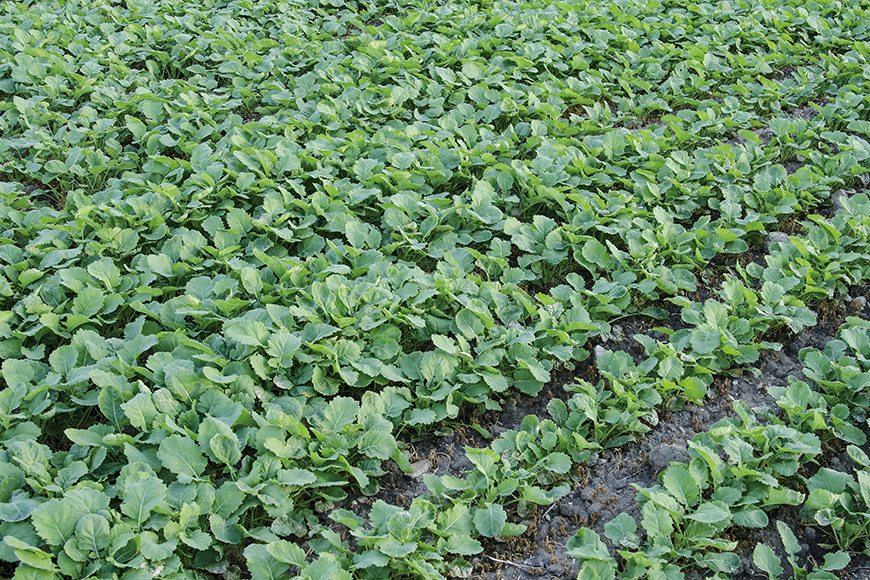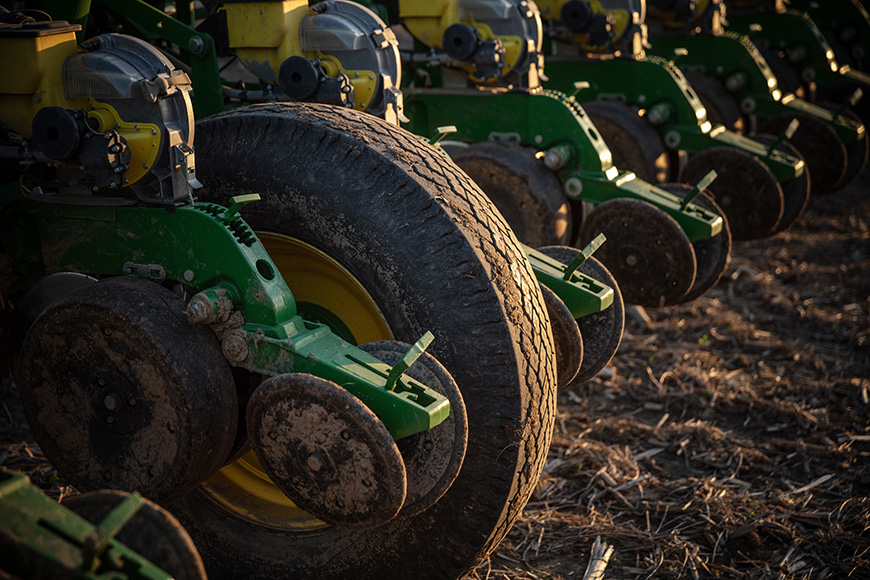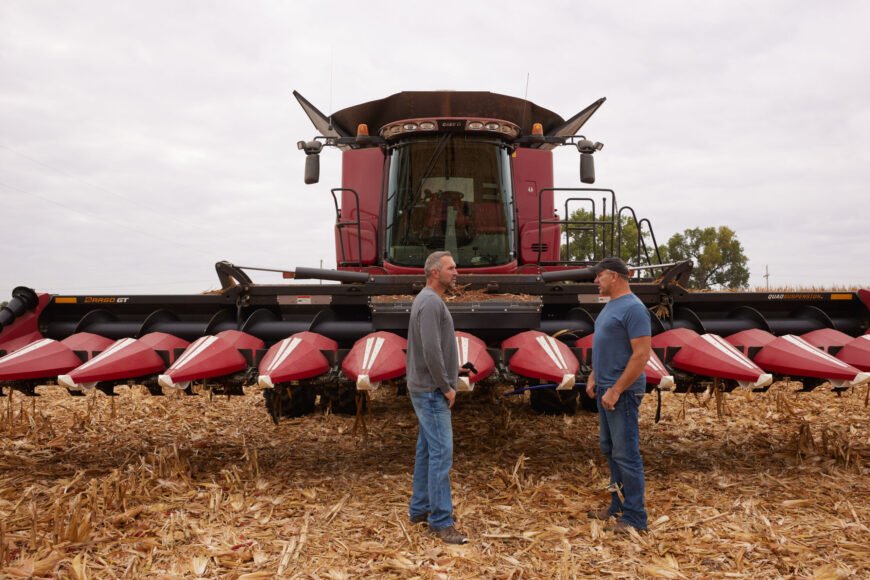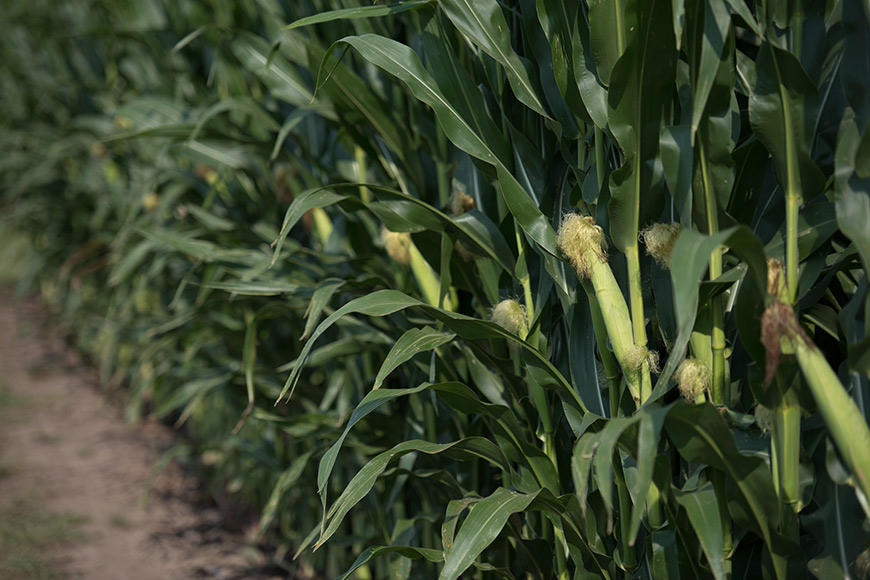Jul 01, 2022
TOPICS(S) | Agronomic Insights
4 Important Steps for Growing Winter Canola
Mick Miller
Winter Canola Product Manager

Provided growing conditions cooperate, canola producers have a good opportunity ahead in 2022. Due to the short supply caused by last year’s droughty conditions, we should see a strong market for at least a couple of years until canola crushers replenish their supply.
In addition to its value as a cash crop, adding canola to your crop rotation can help improve the yield potential of future wheat crops by breaking up the long-running cycles of insects and disease. This benefit continues to fuel the growing popularity of winter canola among producers in wheat-producing regions.
Winter canola is a fairly easy crop to grow, but it’s important to note that you can’t manage it just like winter wheat. This is especially the case in the North, where producers encounter more adverse growing conditions than faced in the Southern Plains. Winter canola can be less forgiving in the North if you make a mistake at planting, but fortunately you can enter the planting season with confidence by practicing the following four steps.
Average winter canola planting dates differ across the country, but they range from mid-July to mid-August in North Dakota, Montana and Canada. Farmers in the Southern Plains typically aim to finish planting by October. 1.
Passing through crop residue forces seedlings to waste a lot of energy and exposes the hypocotyl to air pockets and potential frost damage. It also elevates plant crowns and exposes them to more temperature fluctuations and winterkill. Clearing that trash allows cotyledons to emerge right from the surface of the soil, improving your crop’s winter survivability. I like to see producers seed canola with a hoe drill over a disc drill, because it does a better job moving trash out of the way. Utilizing a row cleaner is another good option.
When it comes to seeding depth, I’d rather see farmers plant deeper into soils with good moisture than planting shallow into dry soils. Planting too shallow can result in irregular germination and uneven stands. The optimal seeding depth for winter canola is 1 inch, but you can go as deep as 2-2.5 inches if you have lighter soils. You’re likely to have more success planting into fallow acres than recent crop acres.
As you prepare to select and plant your winter canola crop, rely on the experience of your local WinField® United retailer to help you select the best products for your operation and place them on the right acres.
All photos are either the property of WinField United or used with permission.
© 2022 WinField United. Important: Before use always read and follow label instructions. Crop performance is dependent on several factors many of which are beyond the control of WinField United, including without limitation, soil type, pest pressures, agronomic practices and weather conditions. Growers are encouraged to consider data from multiple locations, over multiple years and to be mindful of how such agronomic conditions could impact results. CROPLAN and WinField are trademarks of WinField United. All other trademarks are the property of their respective owners.
In addition to its value as a cash crop, adding canola to your crop rotation can help improve the yield potential of future wheat crops by breaking up the long-running cycles of insects and disease. This benefit continues to fuel the growing popularity of winter canola among producers in wheat-producing regions.
Winter canola is a fairly easy crop to grow, but it’s important to note that you can’t manage it just like winter wheat. This is especially the case in the North, where producers encounter more adverse growing conditions than faced in the Southern Plains. Winter canola can be less forgiving in the North if you make a mistake at planting, but fortunately you can enter the planting season with confidence by practicing the following four steps.
1. Plant at the right time.
It’s imperative for winter canola to build up enough energy reserves to survive a harsh winter. For that to happen, plants need to develop a strong root system and produce 6-8 leaves before they go into winter dormancy. As a rule of thumb, young canola will grow at a rate of one leaf per week, so your stand should have 6-8 weeks of good fall growth before the first killing frost (less than 25 degrees F).Average winter canola planting dates differ across the country, but they range from mid-July to mid-August in North Dakota, Montana and Canada. Farmers in the Southern Plains typically aim to finish planting by October. 1.
2. Prepare the seedbed.
Consisting of 80,000 to 150,000 seeds in a pound, canola is a very light, small seed. This means good seed-to-soil contact is essential for seeds to successfully sprout and germinate, so the less residue from the previous crop the better.Passing through crop residue forces seedlings to waste a lot of energy and exposes the hypocotyl to air pockets and potential frost damage. It also elevates plant crowns and exposes them to more temperature fluctuations and winterkill. Clearing that trash allows cotyledons to emerge right from the surface of the soil, improving your crop’s winter survivability. I like to see producers seed canola with a hoe drill over a disc drill, because it does a better job moving trash out of the way. Utilizing a row cleaner is another good option.
3. Seed at the right depth with moisture.
There are two prerequisites for soil when looking to establish a successful canola stand: warm temperatures and adequate moisture within the first 2 inches of the soil profile. An advantage of planting winter canola is that you don’t have to wait around for soil temperatures to warm up, but you do need a well-timed rain, which can be hard to come by in the late summer months.When it comes to seeding depth, I’d rather see farmers plant deeper into soils with good moisture than planting shallow into dry soils. Planting too shallow can result in irregular germination and uneven stands. The optimal seeding depth for winter canola is 1 inch, but you can go as deep as 2-2.5 inches if you have lighter soils. You’re likely to have more success planting into fallow acres than recent crop acres.
4. Select the right variety.
It’s important to have confidence in the winter canola varieties you plant. Fortunately, the CROPLAN® brand seed portfolio is composed of several tried and true winter canola varieties that possess strong yield potential and excellent winterhardiness. You can also trust that our offerings will get even better in the future, as one of our breeding partners’ top goals is to continue developing winter canola varieties with improved winter survival.As you prepare to select and plant your winter canola crop, rely on the experience of your local WinField® United retailer to help you select the best products for your operation and place them on the right acres.
All photos are either the property of WinField United or used with permission.
© 2022 WinField United. Important: Before use always read and follow label instructions. Crop performance is dependent on several factors many of which are beyond the control of WinField United, including without limitation, soil type, pest pressures, agronomic practices and weather conditions. Growers are encouraged to consider data from multiple locations, over multiple years and to be mindful of how such agronomic conditions could impact results. CROPLAN and WinField are trademarks of WinField United. All other trademarks are the property of their respective owners.
IF YOU LOVE OUR INSIGHT, YOU’LL LOVE OUR ROI POTENTIAL
Every successful harvest starts with a seed. It just can't end there. Choose which high-performing seed products you’ll start with this season.






